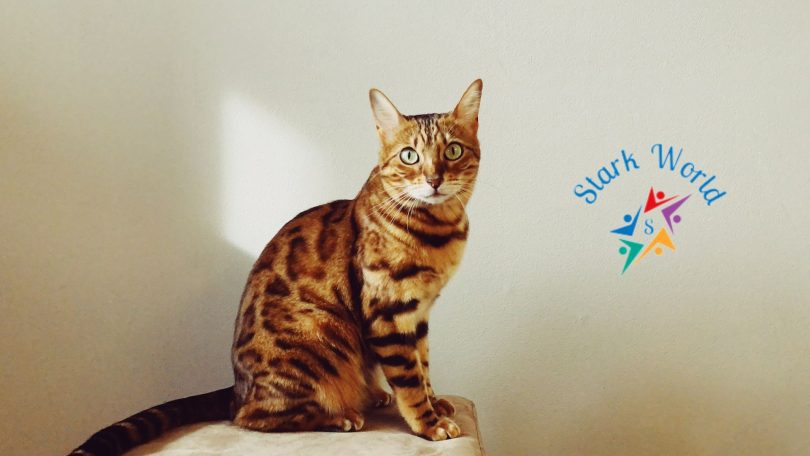Have you ever been curious about what your cat is trying to communicate with you? Let’s explore how to understand your feline friend’s behavior and body language. Cats, unlike dogs, have a different and subtler way of communicating.
Understanding cat behavior can be quite a challenging task, but it is also one that is rewarding in many ways. Let us dive into the enchanting world of cats and their behavioral quirks!
Introduction
Understanding your cat’s behavior serves as the foundation for a healthy and fulfilling relationship with your pet. This understanding allows us to better cater to their needs and ensure their well-being. Moreover, it opens up channels of communication that can lead to a more profound bond.
Advantages of Creating a Powerful Bond with Your Cat
Building a strong bond with your cat has numerous benefits. It can lead to a happier, healthier cat, and a more fulfilling pet-owner relationship. A deep connection with your pet means they will trust you more, which can simplify everything from vet visits to grooming sessions. Furthermore, this bond can provide emotional support and stress relief for you, the owner.
Step 1: Observing Body Language
Understanding Tail Movements
The tail is often the best indicator of a cat’s mood. If your cat’s tail is held high and straight, it generally indicates happiness and confidence. On the contrary, a low tail might signify fear or submission. A wagging tail is usually a sign of irritation, and a puffed-up tail signals fear or aggression.
Interpreting Ear Positions
Cats’ ears are incredibly expressive. Forward-facing ears suggest interest or contentment. However, if the ears are flattened against the head, it can indicate fear or aggression. Sideways or back-facing ears can signify annoyance or uneasiness.
Decoding Facial Expressions
A cat’s face can reveal a lot about their emotional state. Wide, dilated pupils can express excitement or fear, while narrowed pupils might mean your cat is feeling aggressive. A relaxed, slightly open mouth shows contentment, but if the mouth is wide open with teeth exposed, it generally signifies fear or aggression.
Step 2: Recognizing Vocalizations
Differentiating Meows
The ‘meow’ is a versatile vocalization that cats use to communicate with humans. The tone, pitch, duration, and frequency of meows can vary greatly depending on what the cat wants to convey. A short, high-pitched meow often serves as a greeting, while a drawn-out, lower-pitched meow might be a demand for food or attention.
Understanding Purrs
Purring is typically associated with pleasure and contentment. However, cats also purr when they’re distressed or in pain, so it’s essential to consider the overall context and look for other signs of discomfort.
Interpreting Hisses and Growls
Hisses and growls are clear signals of displeasure or fear. If your cat is hissing or growling, it’s best to give them some space until they calm down.
Step 3: Understanding Social Behavior
Recognizing Territory Marking
Cats are territorial animals. They mark their territory by rubbing their cheeks against objects, leaving behind their scent. It is perfectly normal and one should not be discouraged to exhibit this behavior. Also, I have checked the text for any spelling, grammar, and punctuation errors.
Interpreting Aggression and Playfulness
Distinguishing between aggression and playfulness can sometimes be tricky. Playful cats usually have relaxed body language and soft bites, while aggressive cats have tense bodies and flattened ears and might bite or scratch harder. This understanding can help prevent misunderstandings and potential injuries.
Decoding Grooming and Affection
Grooming is a vital part of cat social behavior. Cats groom each other as a sign of affection, known as allogrooming. If your cat grooms you, it’s a clear sign they trust and care for you.
Step 4: Identifying Stress and Anxiety
Signs of Stress in Cats
Signs of stress in cats can include changes in eating or litter box habits, excessive grooming, hiding, and aggressive behavior. It’s crucial to identify stress early and take steps to alleviate it.
Causes of Anxiety in Cats
It’s important to know that cats can experience anxiety in a similar way to humans. Common causes of anxiety in cats include sudden changes in the environment, loud noises, new people or animals, and past traumas.
Strategies to Reduce Stress and Anxiety
There are many strategies to alleviate stress and anxiety in cats. These include providing a safe space for your cat, maintaining a consistent routine, using calming pheromone sprays, and engaging them in regular play sessions.
Step 5: Building a Stronger Bond with Your Cat
Providing Enrichment Activities
Enrichment activities, such as play sessions, puzzle feeders, and interactive toys, can keep your cat mentally stimulated and physically active. These activities can enhance your bond with your cat and improve their overall well-being.
Establishing Routine and Consistency
Cats thrive on routine and consistency. Feeding, playing, and grooming at roughly the same times every day can provide a sense of security and deepen your bond with your cat.
Practicing Positive Reinforcement Training
Positive reinforcement training, which involves rewarding your cat for desired behavior, is an effective way to build trust and establish a stronger bond. Rewards can be in the form of treats, verbal appreciation, or physical affection like petting.
Conclusion
Understanding your cat’s behavior and building a strong bond with them takes time, patience, and love. It’s a journey filled with discovery that can enrich both your life and your cat’s.
Since every cat is unique, what may work for one may not necessarily work for another. But with careful observation and a willingness to learn, you can unlock the secret language of cats and form a deep, meaningful connection with your feline friend.







